-
 Bitcoin
Bitcoin $106,731.2224
-1.05% -
 Ethereum
Ethereum $2,444.9804
-1.20% -
 Tether USDt
Tether USDt $1.0003
0.01% -
 XRP
XRP $2.1882
0.09% -
 BNB
BNB $651.1435
-0.61% -
 Solana
Solana $148.3252
-2.09% -
 USDC
USDC $1.0000
0.01% -
 TRON
TRON $0.2787
0.55% -
 Dogecoin
Dogecoin $0.1598
-3.16% -
 Cardano
Cardano $0.5520
-2.43% -
 Hyperliquid
Hyperliquid $39.0960
-2.64% -
 Bitcoin Cash
Bitcoin Cash $516.9519
2.98% -
 Sui
Sui $2.7011
-2.95% -
 Chainlink
Chainlink $13.0582
-1.71% -
 UNUS SED LEO
UNUS SED LEO $8.9250
-2.53% -
 Stellar
Stellar $0.2359
-0.18% -
 Avalanche
Avalanche $17.3856
-3.73% -
 Toncoin
Toncoin $2.8095
-3.56% -
 Shiba Inu
Shiba Inu $0.0...01121
-1.95% -
 Litecoin
Litecoin $85.2795
-0.85% -
 Hedera
Hedera $0.1471
-2.15% -
 Monero
Monero $319.8004
1.12% -
 Dai
Dai $1.0001
0.01% -
 Ethena USDe
Ethena USDe $1.0001
0.02% -
 Bitget Token
Bitget Token $4.5344
-1.07% -
 Polkadot
Polkadot $3.3224
-2.96% -
 Uniswap
Uniswap $6.9697
-2.75% -
 Aave
Aave $266.1658
-2.25% -
 Pepe
Pepe $0.0...09414
-3.41% -
 Pi
Pi $0.4913
-3.29%
What should I do if Trezor Model T displays "Transaction rejected"?
If your Trezor Model T shows "Transaction rejected," verify transaction details, ensure sufficient funds, update firmware, and consider network congestion before resetting or contacting support.
Apr 06, 2025 at 07:57 pm

If your Trezor Model T displays "Transaction rejected," it can be a frustrating experience, but there are several steps you can take to troubleshoot and resolve the issue. This article will guide you through the process of understanding why this error occurs and how to fix it.
Understanding the "Transaction Rejected" Error
The Trezor Model T is a popular hardware wallet designed to secure your cryptocurrencies. When you see the message "Transaction rejected," it means that the device has not approved the transaction you attempted to make. This can happen for various reasons, including incorrect transaction details, insufficient funds, or issues with the device itself.
Checking Transaction Details
Before proceeding with any troubleshooting steps, it's crucial to verify the transaction details. Ensure that the recipient's address, the amount, and any additional data are correct. A single mistake in these details can lead to the transaction being rejected.
- Open the Trezor Suite on your computer.
- Navigate to the Send section.
- Review the transaction details carefully.
- Double-check the recipient's address to ensure it is correct.
- Confirm the amount you are sending is accurate.
- Check for any additional data that might be required for the transaction.
If you find any errors, correct them and attempt to send the transaction again.
Ensuring Sufficient Funds
Another common reason for a transaction to be rejected is insufficient funds in your wallet. Make sure you have enough balance to cover the transaction amount and the network fees.
- Open the Trezor Suite.
- Go to the Wallet section.
- Check your current balance.
- Calculate the total amount you need to send, including the transaction fees.
- Ensure your balance is sufficient to cover this total.
If you don't have enough funds, you will need to either reduce the transaction amount or add more funds to your wallet before trying again.
Updating Trezor Firmware and Software
Sometimes, the "Transaction rejected" error can be caused by outdated firmware or software. Keeping your Trezor Model T and the Trezor Suite up to date is essential for smooth operation.
- Connect your Trezor Model T to your computer.
- Open the Trezor Suite.
- Navigate to the Settings section.
- Check for firmware updates and follow the on-screen instructions to update if available.
- Check for software updates for the Trezor Suite and install them if necessary.
After updating, restart your device and try the transaction again.
Resetting the Trezor Model T
If the above steps do not resolve the issue, you may need to reset your Trezor Model T. This should be considered a last resort, as it will erase all data on the device.
- Backup your recovery seed before proceeding. This is crucial to restore your wallet later.
- Connect your Trezor Model T to your computer.
- Open the Trezor Suite.
- Navigate to the Settings section.
- Select the option to reset the device.
- Follow the on-screen instructions to complete the reset process.
- Restore your wallet using the recovery seed after the reset.
After resetting, set up your Trezor Model T again and attempt the transaction.
Checking for Network Congestion
Network congestion can also cause transactions to be rejected. If the blockchain network you are using is experiencing high traffic, it may delay or reject transactions.
- Check the current status of the blockchain network you are using.
- Consider adjusting the transaction fee to a higher amount to prioritize your transaction.
- Wait for a less congested period before attempting the transaction again.
Contacting Trezor Support
If none of the above steps resolve the "Transaction rejected" error, it may be time to contact Trezor support. They can provide more specific guidance based on your situation.
- Visit the Trezor support page.
- Submit a support ticket with detailed information about your issue.
- Include any error messages you have encountered.
- Wait for a response from the support team and follow their instructions.
FAQs
Q: Can a "Transaction rejected" error be caused by a problem with the recipient's wallet?
A: Yes, if the recipient's wallet is not functioning correctly or if it is offline, the transaction may be rejected. Ensure the recipient's wallet is operational before attempting the transaction.
Q: Is it safe to reset my Trezor Model T if I have the recovery seed?
A: Yes, as long as you have the recovery seed, resetting your Trezor Model T is safe. You can restore your wallet using the seed after the reset.
Q: How can I prevent the "Transaction rejected" error in the future?
A: To prevent this error, always double-check transaction details, ensure you have sufficient funds, keep your device and software updated, and be aware of network congestion.
Q: Can I recover a rejected transaction?
A: Once a transaction is rejected, it cannot be recovered. You will need to initiate a new transaction with the correct details.
Disclaimer:info@kdj.com
The information provided is not trading advice. kdj.com does not assume any responsibility for any investments made based on the information provided in this article. Cryptocurrencies are highly volatile and it is highly recommended that you invest with caution after thorough research!
If you believe that the content used on this website infringes your copyright, please contact us immediately (info@kdj.com) and we will delete it promptly.
- Powell, Stablecoin Regulation, and Circle's Bold Move: A New York Minute on Crypto's Future
- 2025-07-02 02:30:12
- Ethereum Price, Tom Lee, and Bitcoin: A New Era for Crypto?
- 2025-07-02 02:30:12
- Hoskinson, Ripple, Cardano DeFi: A New Era of Collaboration?
- 2025-07-02 02:35:12
- BlockDAG, ALGO, and the Crypto Trends Shaping 2025
- 2025-07-02 01:50:12
- Cold Wallet, Token, Gains: Is CWT the Smartest Crypto Move?
- 2025-07-02 01:10:12
- Pi Coin's Rocky Ride: Support Levels, Recovery Timeline, and What the Experts Are Saying
- 2025-07-02 01:10:12
Related knowledge
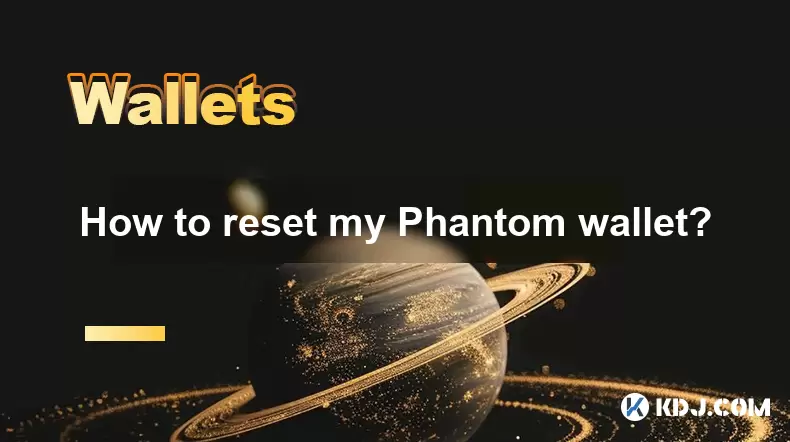
How to reset my Phantom wallet?
Jul 02,2025 at 12:36am
Understanding the Need for Resetting Your Phantom WalletIf you're using a Phantom wallet, you may encounter situations where resetting your wallet becomes necessary. This could be due to forgotten passwords, seed phrase issues, or account corruption. Phantom is a non-custodial wallet primarily used for interacting with the Solana blockchain, and it stor...
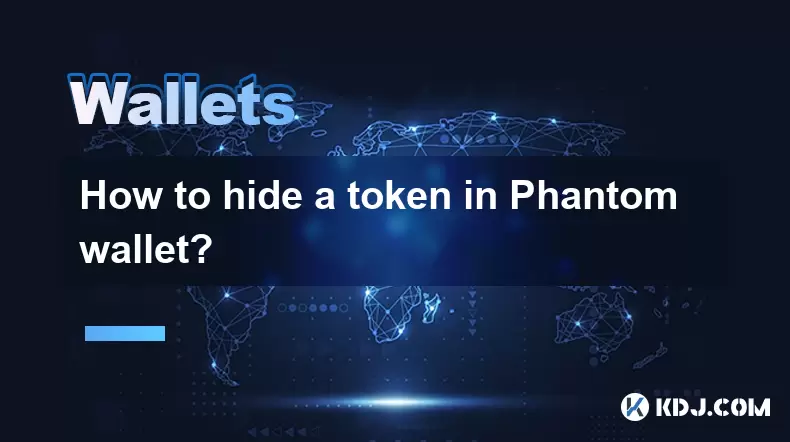
How to hide a token in Phantom wallet?
Jul 01,2025 at 05:49pm
Understanding the Phantom Wallet InterfacePhantom wallet is a popular non-custodial wallet used primarily for interacting with the Solana blockchain. It allows users to store, send, receive, and manage various tokens, including both fungible and non-fungible tokens (NFTs). Before attempting to hide a token, it's essential to understand how the wallet in...
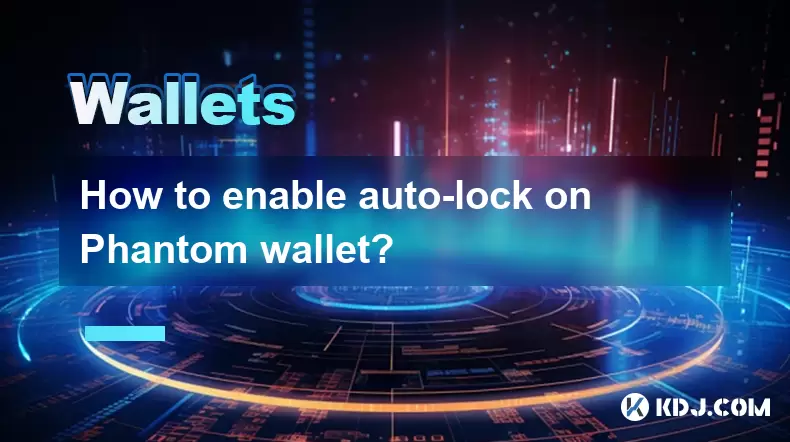
How to enable auto-lock on Phantom wallet?
Jul 01,2025 at 04:01pm
What is Auto-Lock in Phantom Wallet?Phantom wallet is a popular non-custodial cryptocurrency wallet used primarily for interacting with the Solana blockchain. One of its security features includes the ability to set an auto-lock timer, which ensures that the wallet locks itself automatically after a period of inactivity. Auto-lock enhances security by p...
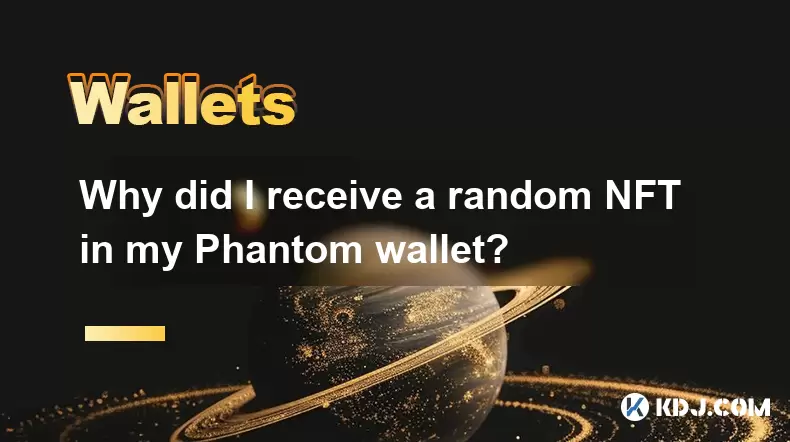
Why did I receive a random NFT in my Phantom wallet?
Jul 01,2025 at 09:00pm
Receiving an Unexpected NFT in Your Phantom WalletIf you've recently opened your Phantom wallet and noticed an unfamiliar NFT appearing in your collection, you're not alone. Many users have reported receiving random or unsolicited non-fungible tokens, often without any prior interaction with the project or sender. This phenomenon has become increasingly...
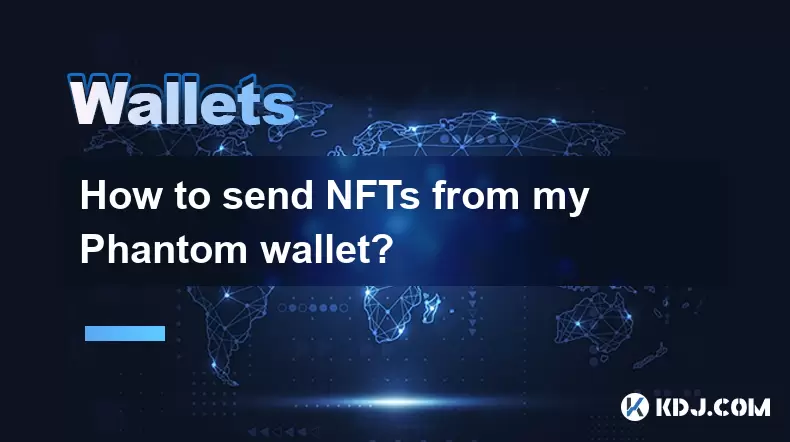
How to send NFTs from my Phantom wallet?
Jul 02,2025 at 03:15am
What is Phantom Wallet and Why Use It for NFT Transfers?Phantom wallet is a non-custodial cryptocurrency wallet primarily used for interacting with the Solana blockchain. It supports both tokens and NFTs, making it a popular choice among users who engage in decentralized finance (DeFi) or digital collectibles. The interface is user-friendly, allowing ev...
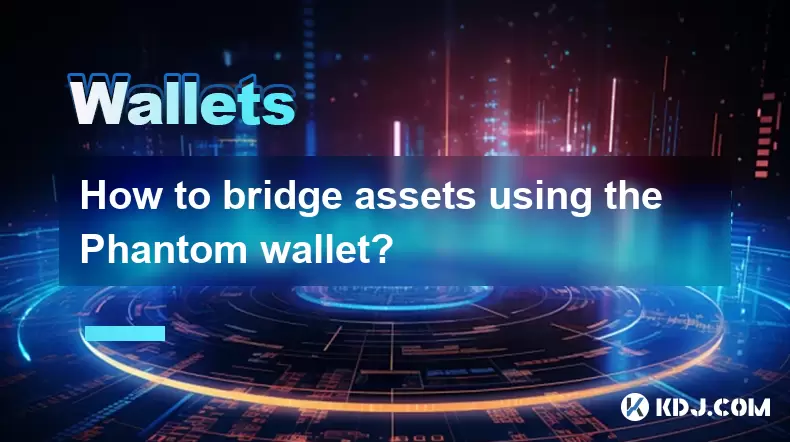
How to bridge assets using the Phantom wallet?
Jul 02,2025 at 02:50am
Understanding the Basics of Asset BridgingAsset bridging refers to the process of transferring digital assets from one blockchain network to another. This functionality is crucial in a multi-chain ecosystem where users may need to move tokens between different networks for various purposes, such as accessing decentralized applications (dApps), participa...

How to reset my Phantom wallet?
Jul 02,2025 at 12:36am
Understanding the Need for Resetting Your Phantom WalletIf you're using a Phantom wallet, you may encounter situations where resetting your wallet becomes necessary. This could be due to forgotten passwords, seed phrase issues, or account corruption. Phantom is a non-custodial wallet primarily used for interacting with the Solana blockchain, and it stor...

How to hide a token in Phantom wallet?
Jul 01,2025 at 05:49pm
Understanding the Phantom Wallet InterfacePhantom wallet is a popular non-custodial wallet used primarily for interacting with the Solana blockchain. It allows users to store, send, receive, and manage various tokens, including both fungible and non-fungible tokens (NFTs). Before attempting to hide a token, it's essential to understand how the wallet in...

How to enable auto-lock on Phantom wallet?
Jul 01,2025 at 04:01pm
What is Auto-Lock in Phantom Wallet?Phantom wallet is a popular non-custodial cryptocurrency wallet used primarily for interacting with the Solana blockchain. One of its security features includes the ability to set an auto-lock timer, which ensures that the wallet locks itself automatically after a period of inactivity. Auto-lock enhances security by p...

Why did I receive a random NFT in my Phantom wallet?
Jul 01,2025 at 09:00pm
Receiving an Unexpected NFT in Your Phantom WalletIf you've recently opened your Phantom wallet and noticed an unfamiliar NFT appearing in your collection, you're not alone. Many users have reported receiving random or unsolicited non-fungible tokens, often without any prior interaction with the project or sender. This phenomenon has become increasingly...

How to send NFTs from my Phantom wallet?
Jul 02,2025 at 03:15am
What is Phantom Wallet and Why Use It for NFT Transfers?Phantom wallet is a non-custodial cryptocurrency wallet primarily used for interacting with the Solana blockchain. It supports both tokens and NFTs, making it a popular choice among users who engage in decentralized finance (DeFi) or digital collectibles. The interface is user-friendly, allowing ev...

How to bridge assets using the Phantom wallet?
Jul 02,2025 at 02:50am
Understanding the Basics of Asset BridgingAsset bridging refers to the process of transferring digital assets from one blockchain network to another. This functionality is crucial in a multi-chain ecosystem where users may need to move tokens between different networks for various purposes, such as accessing decentralized applications (dApps), participa...
See all articles

























































































